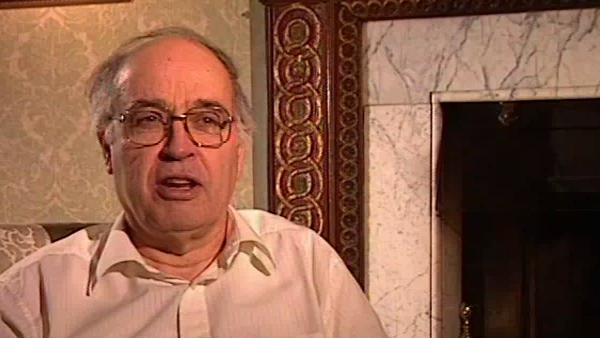NEXT STORY

Simon Donaldson
RELATED STORIES

NEXT STORY

Simon Donaldson
RELATED STORIES


|
Views | Duration | |
|---|---|---|---|
| 71. Interaction between maths and physics | 1001 | 02:14 | |
| 72. Simon Donaldson | 1616 | 02:40 | |
| 73. Symplectic geometry | 872 | 01:03 | |
| 74. Geometry, physics and the future of mathematics | 1241 | 04:08 | |
| 75. Cambridge in 1990 | 666 | 01:17 | |
| 76. The Isaac Newton Institute | 577 | 03:17 | |
| 77. Opposition to the Isaac Newton Institute | 700 | 02:02 | |
| 78. British mathematics | 698 | 03:15 | |
| 79. Trying to build a strong group | 1 | 643 | 01:38 |
| 80. The future of mathematics | 1134 | 03:55 |


When Donaldson had his… produced his invariants from the Yang–Mills equations, the physicists who thought about these things, in particular Witten, I think were very mystified as to… here was he taking these equations which they were using for quantum field theory, he was doing some marvellous things with them mathematically, and what the hell was it… was going on? And it really was very... very unclear for them, and Witten struggled a long time with that objective, trying to understand what Donaldson theory was with all the results in front of him.
And even so, you know, it took him a long, long time to realise and the... the obstacles were… there were a couple of obstacles. One was that when he finally put the thing together that the... the spin-statistics theorem broke down in the Donaldson theory. I mean, things had the wrong… the fermions and bosons had the wrong statistics. So he had to break the psychological barrier that you... you… that physicists had always been brought up to do, that you have to associate the right kind of spin with the right kind of particles… and he had to twist it round.
And so once he, you know, was prepared to break that kind of psychological barrier, then he twisted the theories so that they interchanged the spins. Then he realised that Donaldson theory was a quantum field theory in this sense. It didn't matter for this purpose that he'd twisted the theory because it was a different purpose and so on. So there was a... there was a significant barrier he had to overcome against all, you know, the training of physicists to make that. And... and then, having done that, to observe that the theory was a topological theory and everything worked well.
So I think, given the fact that he had all the data and yet it took him a big effort to actually… even staring at it, to… I... I think there's... there’s no chance that the physicists would have actually produced that if... if Donaldson’s theory hadn't been there in front of them. It wouldn't have occurred to them and it was, as I say, upside down. And, no I... I think it was definitely a question of looking hard at the mathematics and trying to see how it fitted in, and then forcing it to fit in against all the preconceptions. And I say, he spent… I spent a visiting term at the institute then, and it was more or less the last day I was there, having talked with Witten most of the term. You know, he... he… I think at a dinner party he told me, you know, he'd just discovered how to see this and he was terribly excited, and I was just going away and, you know, it was a big breakthrough; but it took him a long time.
Eminent British mathematician Sir Michael Atiyah (1929-2019) broke new ground in geometry and topology with his proof of the Atiyah-Singer Index Theorem in the 1960s. This proof led to new branches of mathematics being developed, including those needed to understand emerging theories like supergravity and string theory.
Title: Interaction between maths and physics
Listeners: Nigel Hitchin
Professor Nigel Hitchin, FRS, is the Rouse Ball Professor of Mathematics and Fellow of Gonville and Caius College, Cambridge, since 1994, and was appointed to the Savilian Professorship of Geometry in October 1997. He was made a Fellow of the Royal Society in 1991 and from 1994 until 1996 was President of the London Mathematical Society.
His research interests are in differential and algebraic geometry and its relationship with the equations of mathematical physics. He is particularly known for his work on instantons, magnetic monopoles, and integrable systems. In addition to numerous articles in academic journals, he has published "Monopoles, Minimal Surfaces and Algebraic Curves" (Presses de l'Universite de Montreal, 1987) and "The Geometry and Dynamics of Magnetic Monopoles" (Princeton University Press, 1988, with Michael Atiyah).
Tags: Simon Donaldson, Ed Witten
Duration: 2 minutes, 15 seconds
Date story recorded: March 1997
Date story went live: 24 January 2008